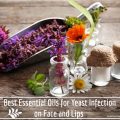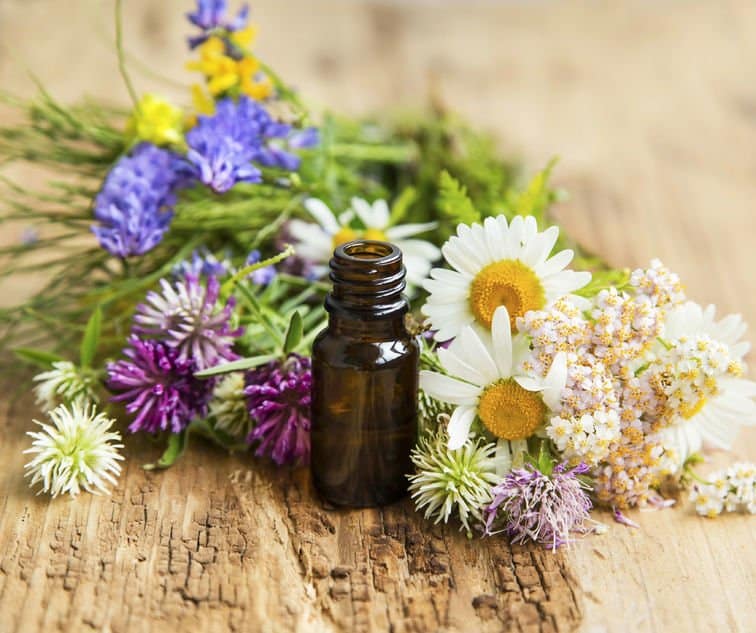
Yeast infection is one of the causes of Candida, which is a common problem that 3 out of 4 women will face at some point in their lives. Candida manifests itself in the form of irritation in the vagina and those suffering from this disease are likely to experience a burning sensation during urination and/or during intercourse along with pain in the vagina. While in most cases the overgrowth of yeast is limited to vaginal region, some people may have this infection in the lower abdomen, under the breasts and under skin folds and nails.
What Is A Yeast Infection?
Yeast is always present in the vagina in small quantities. However, in the event of uncontrolled growth of this fungus, the resultant itching, burning and redness makes one very uncomfortable. In some cases, a thick white and odorless discharge resembling cottage cheese may be observed coming out of the vagina.
Common Causes Of Yeast Infection
Excessive use of antibiotics is one of the main causes of yeast infection. Antibiotics generally damage the bacteria present in the vagina, which in turn upsets the balance of micro-organisms present in the vagina. Hormone levels in the body also influence the balance of the bacteria. Women who use contraceptives are more prone to fungal infections. Women with weak immune systems are also likely to experience yeast infections. Apart from that, excessive stress, lack of sleep, excessive intake of alcohol, pregnancy, diabetes, chronic diseases and the use of steroids can also cause excess growth of yeast.
Types Of Yeast Infection
There are three types of vaginal yeast infection:
1. Yeast infection caused by Candida
The most common form of Vaginitis is fungal infection caused by one of the species of fungi known as Candida. Candida lives naturally in the vagina and other areas of the body in small quantities and rarely causes any issues. However, it thrives in hot, humid environments, and under these conditions, it can grow in number, causing a vaginal infection.
2. Bacterial Vaginosis
Along with Candida, a friendly bacteria known as lactobacilli lives in the vaginal region. When the presence of lactobacilli reduces in the vagina, it can trigger a disease called bacterial vaginosis. Under such conditions, the lactobacilli is replaced by infection-causing bacteria, which in most cases is Gardnerella.
With bacterial vaginosis, a woman is likely to notice a thick or solid color discharge that is transparent or white in color. It is unlikely that itching or burning symptoms will be present. A fishy smell can be significant, especially during sexual intercourse.
3. Trichomonas
Among the three most common types of vaginal infections, Trichomonas Vaginalis is the only one that falls under the category of sexually transmitted infections (STI). Commonly called as “trich”, this infection is caused by a unicellular parasite trichomonas vaginalis, which transfers itself from one person to another.
Why Essential Oils Are One Of The Best Home Remedies For Yeast Infections?
While there are many home based remedies for yeast infection, aromatherapy is one of the most effective remedies around. I see aromatherapy as an opportunity to create a more natural, chemical-free environment that will help treat Candida resistant to common antifungal drugs. Moreover, the good thing is that you can use essential oils without being bothered about any short term or long-term side effects.
There are several different types of essential oils available that you can use to fight yeast infections. Keeping that in mind, here are some of the good essential oils I can confidently recommend for quick relief in yeast infection:
What Essential Oils Are Good For Yeast Infection – 7 Best Essential Oils
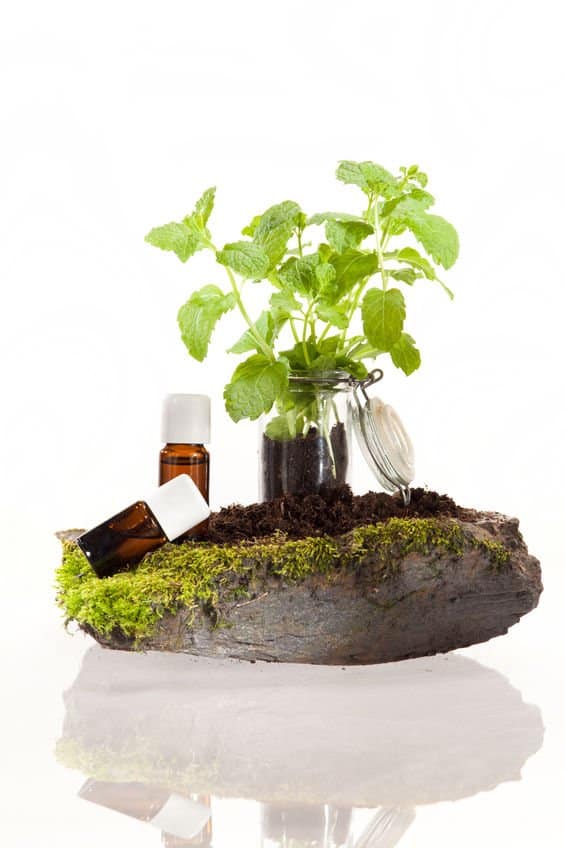
1. Tea Tree Essential Oil
The most popular and natural way to cure yeast infection is using the essential oil of tea tree. It is important to dilute tea tree essential oil before use. To do so, add a few drops of tea tree oil in a teaspoon of sweet almond oil or olive oil. Rub gently on the affected area up to three times a day. Alternatively, add a few drops of the above blend on a tampon and place it inside the vagina for 2-3 hours. For best results, use this remedy twice a day.
Note: This remedy is not recommended for pregnant women.
2. Thyme Essential Oil
Based on the latest research, thyme essential oil has all the properties required to cure yeast infections. It is also one of the recommended essential oils for the treatment of stubborn yeast infections.
3. Oregano Essential Oil
The antifungal properties of oregano oil helps in stimulating the immune system. How to use oregano oil for yeast infection? Just apply the oil diluted in a carrier oil directly to the affected area for significant relief in pain and itching. You can also take herbal oregano capsules twice daily. When applying Oregano topically, dilute it by adding a little amount of jojoba oil in order to avoid irritation.
4. Cinnamon Essential Oil
Essential oil of Cinnamon is another excellent oil / home remedy for yeast infection. You can add cinnamon essential oil to water and drink as a tea or add it to honey; you can also dilute it in coconut oil and apply it directly to the affected areas of the vagina. Make sure that you always use food grade essential oils for internal consumption.
5. Lavender Essential Oil
Lavender can be the most potent weapon of your arsenal when it comes to curing yeast infections. Its antifungal qualities also makes it useful for the treatment of other forms of skin, nail infections and burns. Research concludes that Lavender can kill various types of Candida species including the dermatophytes, which can cause infections of the skin, nails and hair.
6. Lemongrass Essential Oil
The essential oil of Lemongrass is used to treat various fungal infections, including yeast infection, because of its many healing properties. Not only does it help to destroy internal fungal infections like ringworm it is highly effective for external infections like athlete’s foot. Always dilute lemongrass oil in a carrier oil before topical application.
7. Clove Essential Oil
According to studies, the essential oil of clove can be used to battle all kinds of fungal infections including Candida. Clove is effective against at least 15 different forms of fungi. Before applying clove essential oil topically, it should be diluted with carrier oil.
7 Essential Oil Recipes To Treat Yeast Infections
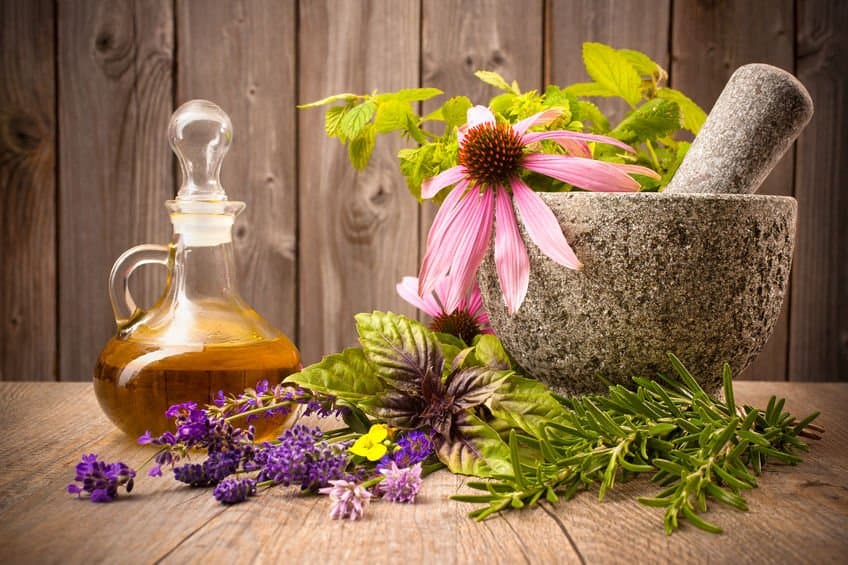
Recipe 1 Combination of essential oils
- Mix 2 tablespoons of grapeseed oil with 3-4 drops each of peppermint oil, tea tree oil, cinnamon oil, lemon oil and oregano oil.
- Store the mixed oils in a bottle.
- Take a cotton ball and dip it in the mixture of oils.
- Apply directly to the affected area.
- Let it sit for a while and then wash the affected area.
- Wipe with a clean cloth.
- Repeat up to twice daily.
Recipe 2 Palmarosa Essential Oil
Combine 4 drops of palmarosa essential oil with 2 drops of tea tree oil. Add this blend to a base cream for yeast infection and apply over the infected areas daily.
Recipe 3 Vaginal Douche
In order to make a douche, you can use a small amount of diluted essential oil. Add 5 to 10 drops of essential oil of your choice to 1 liter of water and use it in a douche. Alternatively, blend your favorite essential oil with Apple Cider Vinegar, which is a popular treatment recipe for yeast infections. Shake the mixture well and use as douche in the morning and before going to bed.
Recipe 4 Essential Oil Bath
If you want to cure yeast infection through essential oil baths, you will need to undergo a shallow bath with high concentration of essential oils. Alternatively, a simpler but less effective way to treat yeast infections would be to add essential oils to your regular bath.
Recipe 5 Direct Topical Application
If you have decided to apply essential oil directly to your vagina, make sure to dilute the essential oil well with a carrier oil like jojoba oil or virgin coconut oil. In order to avoid any kind of allergic reactions or sensitivity, start with a weaker concentration.
Recipe 6 Tea Tree Oil Recipe for Yeast Infection
For Women
Dip a tampon in tea tree oil and insert the treated tampon in your vagina. Leave the tampon in the vagina for 3-4 hours but never sleep with it overnight. Change the tampon every four hours after cleaning the vagina with warm water and drying it thoroughly.
For Men
Men with yeast infection should dip cotton buds in tea tree oil and place the treated cotton over their penis. Wrap the cotton around the penis using medicated gauze so the cotton doesn’t move. Change the treated cotton every three hours after washing the penis. The treatment using tea tree essential oil should be done three times a day for 3-4 days to ensure that the infection causing yeast are all gone.
Recipe 7 Oregano Oil Recipe for Yeast Infection
Over a multi vitamin capsule, pour 2 drops of edible grade oregano oil and ingest the capsule after your meal. Take the capsules twice a day for at least five days. Never take the capsule on an empty stomach as it may cause diarrhea and vomiting.
How To Use Coconut Oil For Yeast Infection – 6 Home Remedies
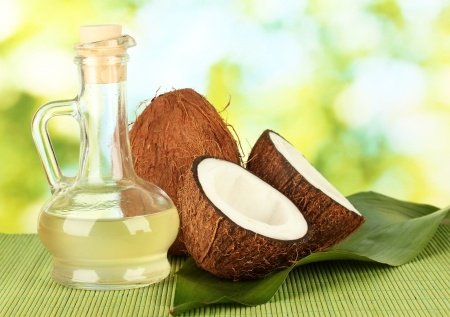
Coconut oil helps fight yeast infection, both internally and externally. A moderate amount of coconut oil added to your diet is safe for use. Coconut oil is rich in unrefined fats that easily convert into energy rather than being stored in the body as fat. The antifungal property of coconut oil kills yeast-causing infection.
You can follow any of the following coconut oil recipes to get rid of yeast infection. All these methods work well in inhibiting Candida overgrowth. There are no adverse side effects of using any of these coconut oil recipes.
Method 1: Direct Application of Coconut oil
- Clean and dry thoroughly the yeast infected area, you can also use a hair dryer.
- Take a few drops of coconut oil and apply a thin layer of it to the affected area.
- Apply this two times daily, i.e. once in the morning and once at night before going to bed.
- Do this regularly to heal yeast infection quickly.
Method 2: Coconut oil diet
Take 3-5 tablespoons of virgin coconut oil every day in your diet. Initially start with a smaller dose and then gradually increase. Alternatively, eat a teaspoon of coconut oil before every meal to help fight any existing infections and prepare your body to ward off future diseases by boosting your immune system against yeast infections.
Substitute other cooking oils with coconut oil in your kitchen and diet. As coconut oil is heat stable, it does not decompose into unhealthy trans-fats when cooked at high temperatures.
Method 3: Coconut Oil Shower
- Take 3-4 tablespoons of coconut oil and add this to 2 liters of hot distilled water.
- Mix well and use the blend for douching. Repeat regularly, at least once a day and this will help prevent yeast infection.
Method 4: Coconut oil with Cinnamon oi
- Blend equal amounts of coconut oil and cinnamon oil.
- Mix well and apply the blend on the affected parts.
This helps control the growth of yeast and prevents future infection.
Method 5: Coconut oil with Vitamin E and garlic oil
- Dilute a few drops of vitamin E and garlic oil in coconut oil.
- Mix well and apply this to the parts that are affected.
- Doing this regularly offers faster healing of yeast infection.
Method 6: Coconut Oil Tampon
Soak a tampon in coconut oil and wear it for few hours, not overnight.
DO’S And DON’TS For Yeast Infection Treatment
Do’s
You can stop the yeast infection, taking preventive measures by following the instructions below:
- Keep the vaginal area clean and dry.
- Remove wet bathing suits and clothing as soon as possible after use.
- Wear cotton clothes and underwear.
- Wear loose fitting clothes and let the vaginal area breathe.
- Add non-fat milk products, whole grains, vegetables and fruits to your diet.
- Eating probiotic foods like yogurt, kefir and sourdough bread.
- Use probiotic supplements.
- Use feminine hygiene products.
- Practice yoga and meditation to lead a stress-free life.
- Change tampons and pads in a range of 6 hours.
- Always change your wet underpants.
Don’ts
- Avoid wearing underwear at night to let in the air.
- Refrain from using bubble baths, deodorants, scented tampons and hygiene products.
- Do not wear socks and nylon or synthetic fibers.
- Abstain from alcohol and reduce sugar consumption.
- Do not use harsh soaps.
- Avoid intercourse during the period you are suffering from yeast infection.
Conclusion
While more research is needed in the field of essential oils to start their use as antifungal medication, the results of scientific studies conducted on essential oils are very promising. Make sure that you consult your doctor before trying essential oils for any kind of yeast infection.

